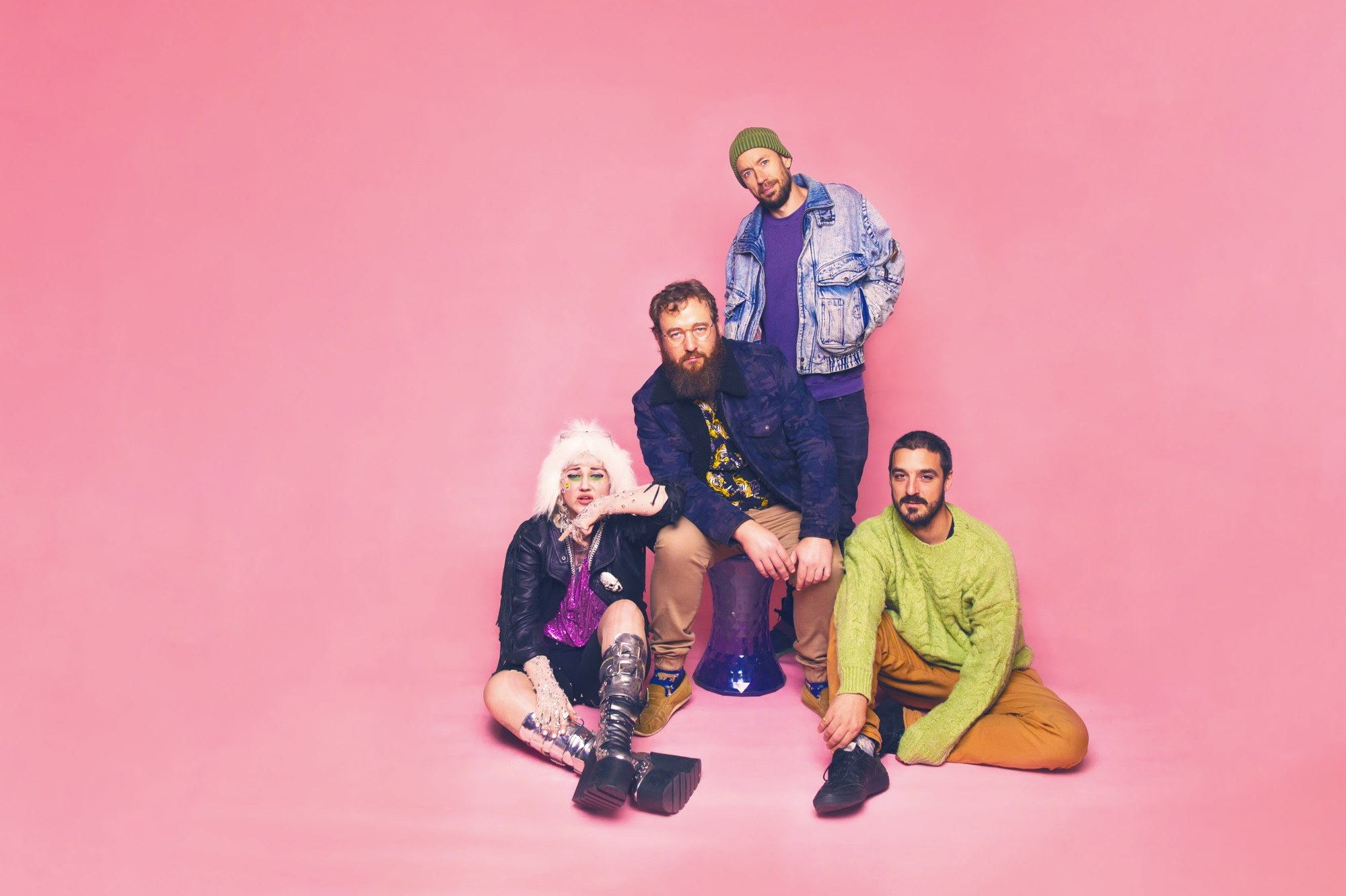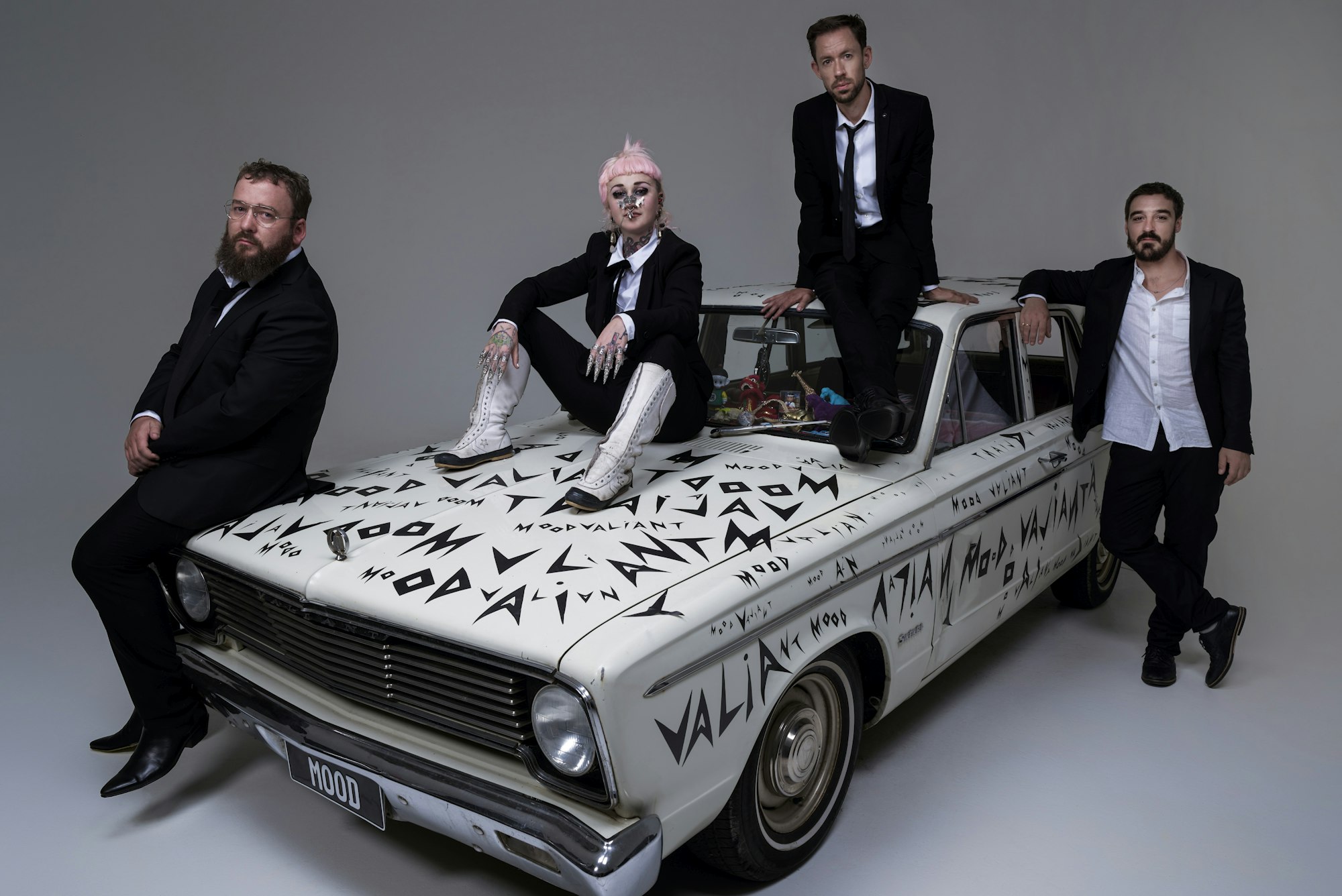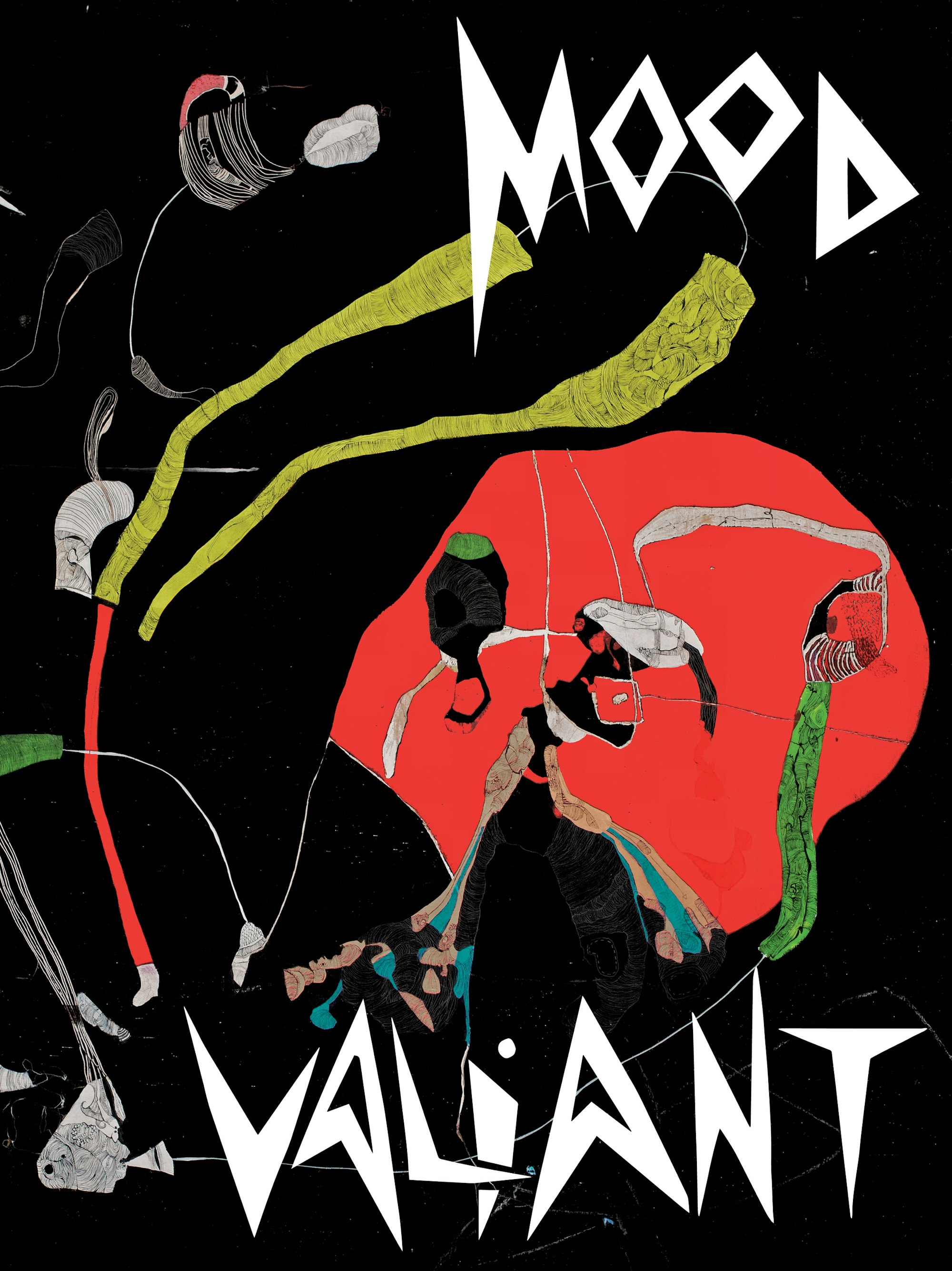Words by Simon Edwards
The Hiatus Kaiyote sound is hard to pin down. So hard, in fact, that the band has coined their own term for it: Wondercore. The perfect word to describe their adventurous, intricate, and fluorescent sound. Their new album Mood Valiant solidifies their reputation as masters of sonic illusion as they swerve between funk, neo-soul, prog rock, hip hop, and Latin jazz, without even blinking. According to Simon Mavin – Hiatus Kaiyote’s keyboardist and composer – their elusive sound is born from every member of the band.
“There’s no specific way in which we write songs together. It comes from all four of us. Once we throw an idea in the pot, it gets stirred around in a way that we haven’t done before.” He continues, “With the four of us in a room together working on music, it’s always going to sound unique. Each of us has a strong approach to how we hear music, and the mesh of that creates its own thing.”
They’re like star-studded Power Rangers, each drawing strength from their own specific colours and influences that help them morph into this behemoth, city-wrecking supergroup. The contrast between each of their sonic palettes is where their magic lies. Where some bands might clash heads due to creative differences, Hiatus Kaiyote welcomes the quirks and nuances that make each of them special.
“In the band, you’ve got two people that have gone through an institutionalised system, and then you’ve got two people who haven’t.” Mavin and Paul Bender (bassist) both studied music academically. Perrin Moss (drummer) and Nai Palm (guitar and vocals) are both self-taught. Mavin goes on, “That combination is amazing. If you have too many people in a band that has followed the institutionalised route of learning and creating music, it can easily become stale and lifeless.”
You’ve got to look within and find the shit that you love and that you want to create and do it.
Mavin’s musical education gave him the skills and knowledge to expertly play his part within the Hiatus fold, but time and perspective have given him new ideas on how to seek creativity, as he explains: “Going through university, you go to your teachers and people you aspire to be like, and you ask them for direction. That’s the wrong way to approach making music. You’ve got to look within and find the shit that you love and that you want to create, and do it, learn it, and be that. Fuck going to someone and saying: help me become a great musician. You’ve got to figure that out for yourself. And if you do, you’ll be doing something that no one else is doing. That element comes from every single member of the band.”

It took more than just time and perspective for Mavin to come to this realisation. Seeing how his bandmate Perrin Moss approached music, and also how other musicians perceived Perrin’s drumming style also helped him to change the way he conceived what music should be.
“It’s crazy that Perrin is a drummer that’s practically self-taught and he has these incredible drummers around the world that are completely in awe of him. That’s fucking nuts! Think about that for a second.” He explains, “Perrin was a bedroom producer who was making beats heavily influenced by Dilla and other hip hop artists. He’d make these tracks that weren’t made to a click, so they’d be out of time. He couldn’t play them yet, but then he learned how to play his own breaks on a kit. That in itself creates such uniqueness. He created something that he couldn’t do live, but then he taught himself how to do it. Who does that? I don’t know of any musician who’s said: I’m going to create something really difficult that I can’t play yet, and then I’m going to learn how to do it. That to me defines the concept of uniqueness.”
After a show in Los Angeles, the band got to hang out with legendary hip hop producer Madlib. His reaction to Perrin’s drumming style really hit home for Mavin: “We ended up going back to the studio with Madlib and jamming until the early hours of the morning, and he was blown away by the way Perrin approaches music and the drums. That kind of acknowledgment really made me think: this dude is doing something really unique and amazing.” As a student of hip hop, it was a special moment for Perrin too: “He was flipping out! We all were. It was crazy.”
He continues, “Everyone is striving to create something that hasn’t been created. That’s the goal of a musician: to create music and not sound like someone else. I think Perrin does that so well.”
The admiration that each of the band members has for each other’s talent shines through in the music. The tight bond they share carries its way through every note of Mood Valiant – the cutthroat precision of their musicianship is placed under a microscope for all to hear. Hiatus Kaiyote keeps a tight circle when it comes to their recording process, but after Nai Palm suggested getting the legendary composer and arranger Arthur Verocai involved with the album, it was an idea the group couldn’t turn their back on.

“We’re all big fans of his records from the ‘70s. He’s a super lovely guy; really genuine. He was great to hang out with, and such an incredible arranger. It’s magical to watch someone write without touching an instrument. It’s awe-inspiring to see someone who can just sit there and hear the music in their head. You can see it all processing in his brain, and then you hear this audio version of what he was imagining. It was very inspiring.”
Verocai’s vitamin-D-drenched sound was the perfect fit for Get Sun – a track with a snake-hipped groove, heightened by sweeping strings and explosive brass riffs. Verocai’s distinctive handiwork also bookends the Mood Valiant listening experience, which for a band that keeps collaborators at arm’s length, shows just how much love and admiration they have for his musical wizardry.
Playing around with different techniques is an extremely fun way of thinking about composition.
For Mavin, it’s the experimental side of composition and production that drives him. Finding new ways of working doesn’t only keep things interesting for Mavin, it helps him to unlock the other elements of their songs: “Playing around with different techniques is an extremely fun way of thinking about composition, just trying to create different approaches to the way you usually make music. It takes the weight off the harmony and the rhythm. If you’re focusing on something that is different, those other parts come organically, and they often sound better than when you’re lamenting on compositional ideas too much.”
Talking to Mavin it quickly becomes obvious that this is a huge part of why he loves the creative process: “What else is there to do?” He laughs, “That’s just the studio world. You can go so deep – it’s limitless.” One of the recording sessions for the album took place in Byron Bay. The band flew up a huge amount of equipment, nearly half of their studio – giving them plenty of toys to play with. They soon discovered a huge empty water tank on-site, which of course instantly called out to the band: “We chucked a mic and a speaker straight in it and used it as a reverb tank. That was awesome. It was such a vibe. You can hear it on Sparkle Tape Break Up and And We Go Gentle. There are some crazy vocals from Nai that go through that effect.”
Sparkle Tape Break Up came together from one of Mavin’s ideas, a technique he had been thinking about trying for a while: “Something I was really keen to play around with on this record was MIDI-ing a bunch of keyboards together. I ended up chaining a MiniMoog Model D, a Mellotron Micro, a Roland JX-3P, and another polysynth, and I MIDI-ed them all together. The opening sound on Sparkle Tape Break Up is all from that technique. It sounds like this weird orchestral synth thing, but it’s just me playing six keyboards MIDI-synced together. It’s a huge onslaught of sound. That was something I had never done before. It was an awesome moment. When I pulled that sound up it was like: Whoa! We immediately tracked it.”
The six-year journey that resulted in Mood Valiant was a necessary one. The band was endlessly touring after the release of their second LP Choose Your Weapon. The whole band felt drained by life on the road: “Being on the road is a crazy experience: you’re sleep-deprived and gigging most nights of the week, in a different country every day. It was a crazy rollercoaster ride being on the road as much as we were back then. A lot of the time leading up to this album was just recovery.” Mavin continues, “It gave us the time to think about who we are and what it is we want to do – which sometimes gets difficult to work out when you’re in a project that’s got the brakes off.”

This time of rest and recuperation was even more important for Haitus Kaiyote’s frontwoman, Nai Palm after she was diagnosed with breast cancer in the autumn of 2018.
“We were all there for her, and we helped her in any way that we could. Thankfully she got through it, and she’s healthy. She is an incredibly strong person, who has an incredibly beautiful outlook on life. Many people could have taken that news and seen it in a very different way from the way she did. She came out of it a stronger person. It was a beautiful thing to see.” He adds, “A lot of the record was tracked before Nai was diagnosed, but a lot of the lyrics and vocals weren’t. You can kind of hear it in a lot of her vocal takes.”
Mood Valiant is a testament to the strength of Hiatus Kaiyote – not only as bandmates but also as friends. Their ship was rocked, but they were never going to leave anyone behind: they had to ride out the storm together. Now the sun is shining, and it’s going to be one hell of a party when their ship touches the shore.
Mood Valiant is out now on Brainfeeder Records / Ninja Tune
